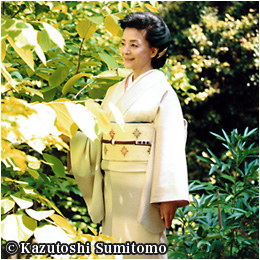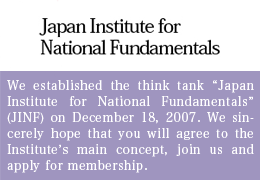China’s Modus Operandi for Territorial Plunder Lays Itself Bare in India
In December, I had a rare opportunity to witness at first hand the intricate reality of the relationship between India and China, which is complicated by a mountain of tough issues including disputes over territory, the trade imbalance, and water resources. I happened to be in India on a visit representing the private Japan Institute of National Fundamentals of Tokyo to exchange ideas and opinions with India’s leading think tank – the Indian Council of World Affairs (ICWA), headquartered in New Delhi. Our visit coincided with the December 15-18 visit to India by Chinese Premier Wen Jiabao, which provided us a chance to observe – quite by chance – some delicate aspects of India-China diplomacy evolving under rather unsettling circumstances.
ICWA is India’s most authoritative think tank, founded in New Delhi in 1943 through the good offices of Jawaharlal Nehru, the Indian statesman who went on to serve as the first and longest-serving prime minister (1947-64) of independent India. The ICWA building has a spacious auditorium capable of accommodating several hundred visitors and an impressive library occupying its basement. The front stairs and entrance hall are all made of marble, a palpable air of history permeating every part of the entire structure.
At 3:30 p.m. on December 16, the diminutive Wen showed up at the Center, straightening his back and keeping his chin firmly up. Here and there in the auditorium, tall and burly Chinese security men stood guard like soldiers on full alert – a scene I seemed to remember seeing somewhere before. Then it came back to me ― three years ago a similar blue-uniformed group of tough young guards had run encircling the torch during the 2008 Beijing Olympics torch relay. These husky men, with identical cropped haircuts and standing about 180 to 190 centimeters (5 feet 11 to 6 feet 3 inches) tall, must all be Han Chinese and members of the Chinese Communist Party, I thought.
Premier Wen’s address, lasting 20 minutes or so, drew only sporadic applause. After a scheduled press conference, visitors to the event started rowdily discussing their impressions of the premier’s remarks. Finding among the crowd Kanwal Sibal – former Indian Foreign Secretary with whom I had exchanged opinions just the day before – I promptedly walked over to him to ask what he thought of what the Chinese leader had to say.
“Frankly, I found nothing forward-looking in his remarks vis-a-vis a possible improvement of India-China relations,” replied Sibal, as in retort to the Chinese premier. “All the heads of states that are U.N. Security Council permanent members have visited this nation in the past six months, but I am afraid Wen’s visit produced the least results. It makes me wonder why the Chinese side had asked the Indian government to receive him at such a short notice in the first place – if they had originally envisioned so fruitless a visit as this.”
Purpose of China’s Patronage of Pakistan
India’s relationship with the U.S. has shown signs of a major step forward since U.S. President Barak Obama made an unprecedented three-day state visit to India early last November – more than a full month before Wen’s visit – during which Obama supported his host nation’s permanent U.N. Security Council membership. Previously, Obama’s predecessor George Bush had called the U.S. and India the world’s “oldest democracy” and “largest democracy,” respectively. Many thoughtful Indians believe that the visit by the Chinese premier was purposely intended to take the necessary measures so China would not be left out in the wake of a growing closeness of India-U.S. ties which are tightly bound by common values. Even at that, Wen did not grapple squarely with India’s earnest desire to play a larger role at the United Nations, paying only lip service to this issue – to great frustration on the part of Indians.
On Wen’s posture towards India-China trade relations, Sibal had this to say:
“Premier Wen did indeed commit China to making efforts to increase the bilateral trade volume by $100 billion annually, but our aim is certainly not quantitative trade expansion. India suffers an overall trade deficit of $19 billion against China a year, and, to rectify the balance, China must open its market to India’s IT, agriculture and medical products. However, no real proposal came from Wen to liberalize China’s import market.”
Three major problems confront India and China today: (1) India’s U.N. Security Council permanent membership; (2) recognition of India as a nuclear state; and (3) territorial issues involving India’s northernmost Jammu Kashmir state as well as the far northeastern Arunachal Pradesh state.
Because of China’s refusal to show any willingness to narrow the gap over any of these issues, the results of Wen’s visit were extremely disappointing to India, making Sibal remark that he was almost prompted to wonder if India may have failed to come to grips with China’s intentions as well as its view on India in the first place.
On November 22, 2008, Mumbai – India’s largest and the world’s most populous city – came under more than 10 coordinated terrorist attacks, leaving 164 people dead and more than 300 injured. While all the heads of state constituting U.N. Security Council permanent members expressed condolences and/or demanded that Pakistan punish the terrorists, Premier Wen was alone in making absolutely no reference to the incident throughout. China has long been patronizing Pakistan as a means of countering India, and many Indians felt at the time that, because the terrorists were traced back to Pakistan, Wen did not utter even a word of sympathy for the victims.
Indian experts believe China has provided Pakistan nuclear weapons and missiles as a step to continue troubling India with the problems of Pakistan, preventing India from sparing enough resources to deal with the issues with China. The analysis by these experts is that China, which clearly is pursuing hegemony over the Indian Ocean, is dead set on binding India with its problems with Pakistan in order to make it difficult for India to amass enough naval force to counter China.
The problems with Pakistan certainly constitute a heavy burden on India, but China has further challenged India with territorial issues near the border. Explains Professor Brahma Chellaney, Director of the Centre for Policy Research headquartered in New Delhi:
“On the day the Chinese premier entered New Delhi, the Chinese side reported on the opening of a tunnel in the eastern sector of Tibet near Arunachal Pradesh state. If and when a state of emergency develops between India and China, the Chinese Liberation Army can instantly and very easily invade Arunachal Pradesh state through this tunnel.”
As the area in question represents a major water resource, China has plans to construct a dam upstream the river that flows into India.
Possibility of Military Occupation
Chellaney further spoke about what China has been up to in its relationship with India:
“Chinese leaders always come up with portentous problems for India, as if to put a knife to our throats, every time they visit India. In fact, when President Hu Jintao came here in 2006, he abruptly revived China’s claim for the state of Arunachal Pradesh which the Chinese side had long refrained from mentioning over the years. Arunachal Pradesh is a northeastern Indian state twice the size of Taiwan. This time, Premier Wen chose China’s territorial claim over Jammu Kashimir as his trump card.”
This means India now is confronted with territorial problems involving two of its 28 states. Chellaney calls the reality very harsh, explaining:
“China unlawfully occupies India’s Aksai Chin region which accounts for a fifth of the state of Jammu Kashmir, intensifying anti-Indian activities there on three fronts. First, China has launched several projects in an area of Jammu Kashmir currently under the effective control of Pakistan. The move is based on a strategy to increase China’s presence in the disputed area. In order to forge ahead with these projects, China has sent in a large number of soldiers. There is a possibility of these soldiers continuing to stay on even after completion of the projects, creating a de facto military occupation of the region by China.
“Next, China has resorted to a crafty trick in regions controlled by India. As a means of not recognizing the regions as India’s sovereign territory, China has begun to provide the residents entering China pieces of paper with stamps showing that a visa has been granted – separate from the passports. The paper is simply stapled to the passport and can be destroyed after the resident enters China. This guileful trick reflects the Chinese intention of saying that residents of the Chinese territory do not actually require the visa to enter China.
“Thirdly, the Chinese government has incorporated into the Chinese territory a wide expanse of the land along the Indian-Chinese border, drastically shortening the customary borderline.“
With China having already maneuvered to create these advantages for itself, Premier Wen proceeded to tell his Indian audience during the ICWA address:
“(The boundary dispute between India and China) will take a fairly long time (to resolve). Rather than seeking a solution now, let us entrust the future generation to resolve it.”
This is exactly the same ploy China resorted to when it attempted to take the Senkaku Islands in the East China Sea from Japan in the past. All nations must stand on guard from now on to protect themselves from the crafty Chinese modus operandi of wresting sovereign territory – land as well as sea – from its neighbors.
(Translated from “Renaissance Japan” column no. 444 in the January 20, 2011 issue of The Weekly Shincho.)








